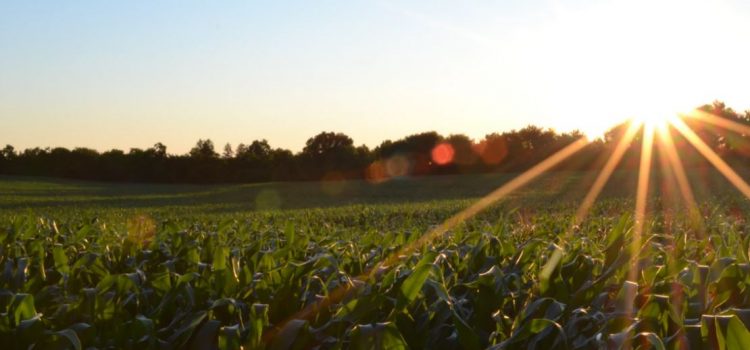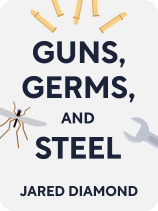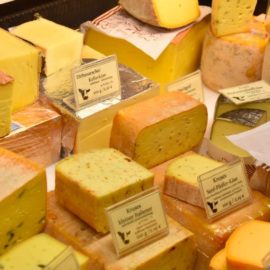

This article is an excerpt from the Shortform book guide to "Guns, Germs, and Steel" by Jared Diamond. Shortform has the world's best summaries and analyses of books you should be reading.
Like this article? Sign up for a free trial here .
What is Jared Diamond’s theory about food production and farming in Eurasia? What factors created the Fertile Crescent?
According to historian, geographer, and ornithologist Jared Diamond, Eurasia developed and thrived thanks to its food production. One huge factor in that food production was the fact Eurasia was located in the Fertile Crescent, a geographical location perfectly suited for domesticable plants.
Here’s a closer look at Jared Diamond’s theory on Eurasia and the Fertile Crescent.
It Started With Adequate Food Production
In his book Guns, Germs, and Steel, Jared Diamond argues that the development of advanced civilizations depended first on the development of varied, abundant, and dependable food sources. This food production was achieved through the invention of agriculture.
(Shortform note: Some scholars claim that Diamond places too much stock in the idea that agriculture revolutionized the lifestyle of early humans. They feel there’s little evidence to distinguish foragers from farmers: Early civilizations practiced foraging while they farmed for millennia—so it’s not clear that farming should be seen as a starting point from which different societies diverged. Nevertheless, Diamond’s argument is supported by a population boom found in the archaeological record which suggests that the widespread adoption of farming did have significant effects on societies.)
Jared Diamond’s theory says Eurasia could develop such food sources because it had geographic and environmental advantages over other regions of the world, so food production took off more readily in Eurasia than it did elsewhere. These advantages were:
- Domesticable plants
- Domesticable animals
- Geography favorable to food production
In this article, we’ll take a closer look at domesticable plants.
Eurasia Had Plants Well-Suited to Domestication
Diamond’s theory explains that wild plants are generally good prospects for domestication if they have some of the following attributes:
1. They show natural traits that are useful to humans, such as being sweet, oily, fibrous, or easy to gather.
2. They have successful germination attributes (such as producing many seeds that can stay dormant for years at a time) that enable them to survive bouts of bad weather.
3. They reproduce by means that allow humans to control and predict the usefulness of the plant’s offspring.
| Domesticated Plants Have Invisible Useful Traits The traits scientists look for when identifying domesticated plants are in many cases traits the foragers domesticating them would not have recognized. While early foragers may have noticed obvious visible traits, such as fruit size and color, experts don’t believe they would have noticed less visible traits, such as successful germination attributes or good reproduction characteristics. In most cases, these positive invisible traits—whether they were present in the wild form of the plants or not—would become more commonplace in the plants humans used. Given enough time, wild plants that were consistently used by humans—whether they had recognizable desirable traits in the wild or not—changed on a genetic level to become more dependent on human care and more useful for humans. Scientists study these genetic features of domestication. One such trait stands out as a clear sign of past domestication for these scientists: seed retention. Plants that are genetically disposed to hold on to their seeds were probably used by humans for many generations because seed retention is otherwise a poor adaptation for plant survival—it’s better for a plant to scatter its seeds. For humans, however, plants that don’t drop their seeds make the job of harvesting easier. Typically, then, domesticated plants have attributes like these that make it hard for them to survive without human care, indicating that some factor beyond natural selection affected their genetic evolution. These genetic changes would have proceeded slowly and gone largely unnoticed by the humans using the plants. |
The Fertile Crescent (the modern-day Middle East) was the first place where plant domestication occurred independently in the world because the plants of that region were well suited to it. Diamond offers several potential reasons why domestication was so successful there.
(Shortform note: While Diamond argues that the Fertile Crescent independently developed plant domestication earliest (8500 BCE by his account), he doesn’t suggest that it was the only place plant domestication independently arose. Current evidence indicates that, in addition to the Middle East (the Fertile Crescent), it also arose in South Asia, East Asia, New Guinea, Africa, South Arabia, North America, Mesoamerica, and South America.)
Qualities of the Fertile Crescent
First, the climate of that region—mild, wet winters and long, hot, dry summers—resulted in many annuals that lived for one growing season and put most of their energy into producing large seeds capable of surviving the hot, dry season to sprout when the weather turned mild and wet again. This survival strategy resulted in more edible material (seeds) per plant than is common with perennial plants. Perennial plants such as trees often put more energy into growing long-lived, inedible material (such as woody stems) than into producing seeds that can survive for the next growing season. Thus, in places where perennial plants dominated, food production was slower to take off.
(Shortform note: Recent research indicates that, contrary to Diamond’s emphasis on annuals, a perennial plant was likely the first domesticated crop: the fig tree. Archaeobotanists have found evidence that the fig tree was cultivated in the Fertile Crescent nearly 1,000 years before common annual crops such as wheat, barley, and legumes.)
Second, the abundant edible wild plants in the Fertile Crescent produced huge quantities of comestible seeds that hunter-gatherers could easily store. The sheer volume of useful, storable seeds encouraged tribal bands to establish settlements rather than stay on the move seeking other food sources. This kick-started the practice of maintaining crops. In places where plants produced less abundant edible and storable material, hunter-gatherers were slower to settle down.
(Shortform note: Archaeological evidence backs up Diamond’s suggestion that hunter-gatherers in the Fertile Crescent lived in long-term settlements before the dawn of agriculture. For example, excavation reports from a village in the Euphrates Valley of Syria show that hunter-gatherers established a settlement that was occupied from approximately 9,050 BCE to 5,000 BCE. In the early phase of this settlement, the inhabitants were foraging for wild plants and animals, but by the later phase, they were cultivating grains and tending herds of animals.)
Finally, according to Jared Diamond’s theory, many of the edible wild annual plants in the Fertile Crescent tended to reproduce by self-pollination: They’d fertilize themselves and produce identical offspring. This was valuable because it ensured future generations would maintain the desirable traits of their parents. Importantly, however, many of these plants could also reproduce by cross-pollination. This meant two parent plants could be bred with each other to produce a daughter plant with a combination of the parent traits. This was helpful because occasionally, plants that reproduced this way resulted in daughter plants with better traits than the parents.
(Shortform note: Botanists argue that a main advantage self-pollinating plants had for domestication was that they’d produce daughter plants that couldn’t be fertilized by related wild plants. By contrast, open pollinated plants are prone to fertilization by wild relative plants, which can result in unexpected changes in plant attributes. Experts observe that the majority of cultivated plants today reproduce by self-pollination and that this trait can be traced back to the wild ancestors of these plants. This means that the wild ancestors of domesticated plants already had this trait, which made them better suited to eventual domestication.)
Early Fertile Crescent settlers, therefore, had good, abundant plant stock to work with. Because of this, they had an easier time domesticating their local wild plants than settlers in many other regions of the world.

———End of Preview———
Like what you just read? Read the rest of the world's best book summary and analysis of Jared Diamond's "Guns, Germs, and Steel" at Shortform .
Here's what you'll find in our full Guns, Germs, and Steel summary :
- An in-depth look into why societies historically took different paths
- The environmental factors that affected the historical development of those societies
- Why Eurasians had strategic advantages over non-Eurasians






